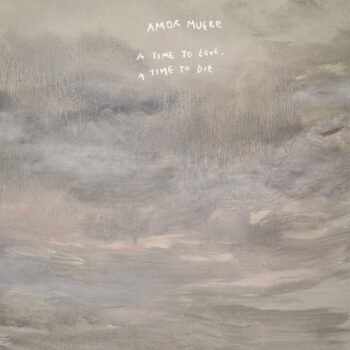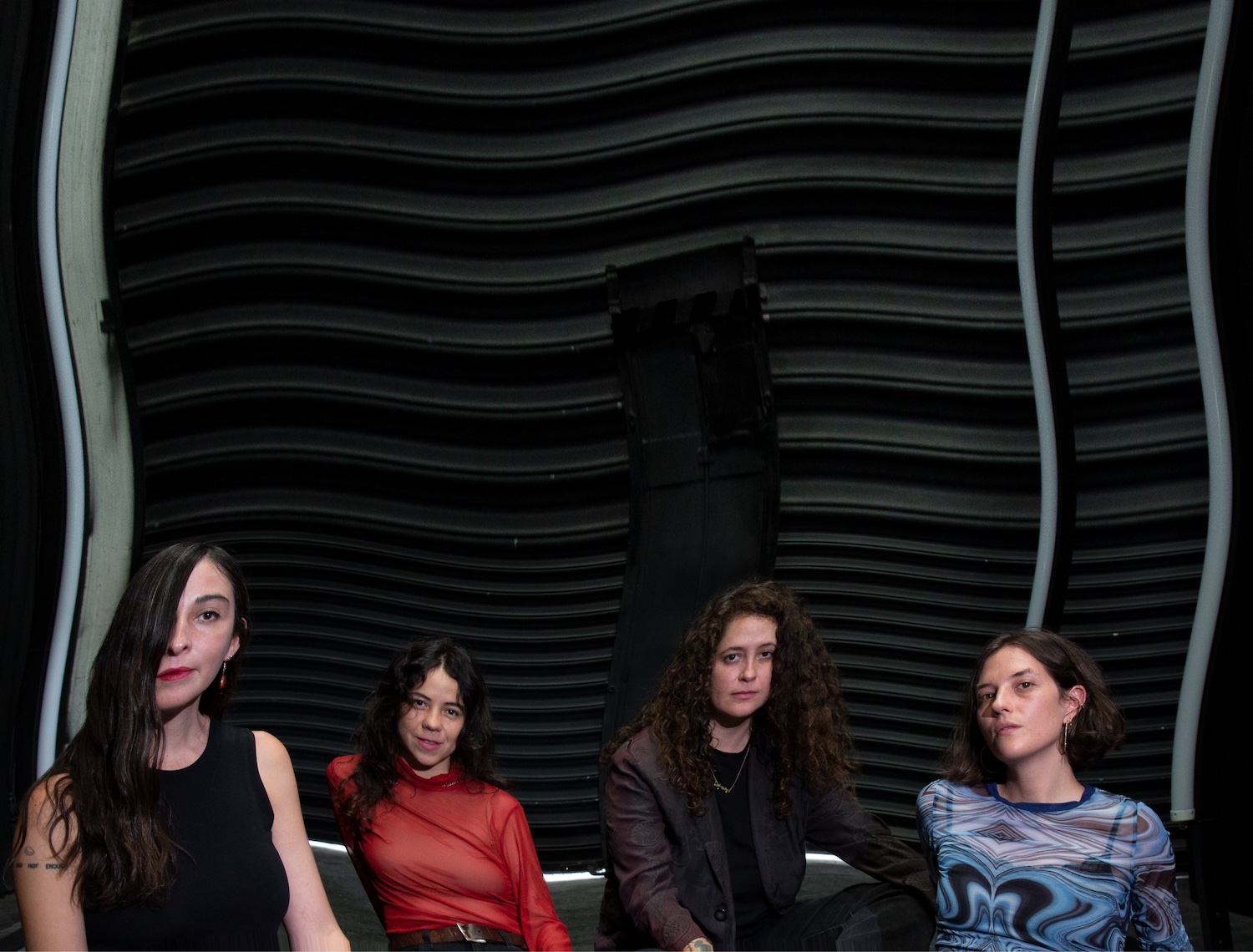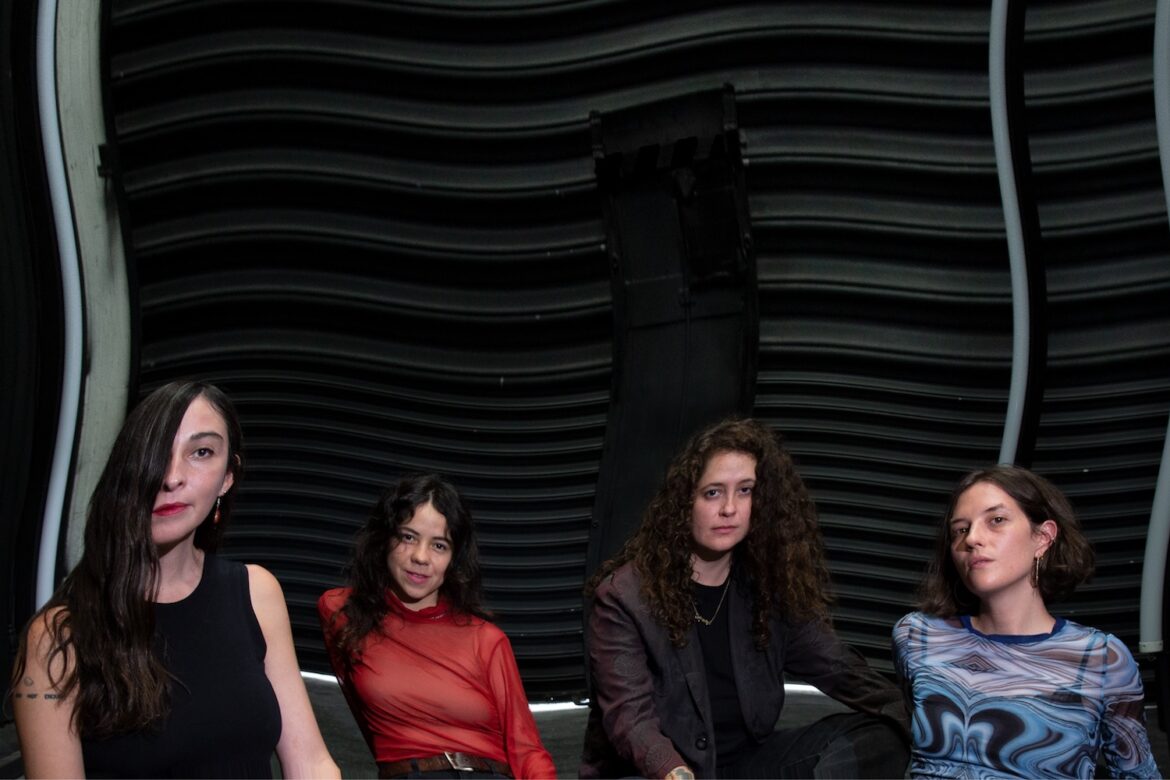Although based in Mexico City, retreating to the jungles of Veracruz allowed the four players of Amor Muere to create an intimate and intricate debut album, ‘A Time to Live, A Time to Die.’
Stream: ‘A Time To Live, A Time To Die’ – Amor Muere
“If what they say is ‘Nothing is forever,’ then what makes, then what makes, then what makes, what makes love the exception?” Andre 3000 famously posited back in 2003.
This past November, right around the same time that Mr. 3000 re-entered the music arena with his solo debut album, New Blue Sun, a group from Mexico City emerged with quite the contrary view on the matter to the OutKast frontman. Amor Muere (“Love Dies,” in their native Spanish) consists of four female musicians living in Mexico City who decided to convert their personal friendship into a musical partnership. Thus, a singer, a cellist, a violinist and an EDM technician came together under the same banner and— whenever they weren’t working on their individual musical projects – would meet up semi-regularly to rehearse and record in a shared space.

One of the most fruitful of those meetups occurred at the home studio of Camille Mandoki, the group’s lead vocalist and sound artist. The four-hour drive from CDMX to Zoncuantla, Veracruz took the musicians from an intense urban environment to an equally flourishing environmental one in the montane forests of eastern Mexico. Mandoki’s studio is located on the edge of that jungle, and she invited her bandmates— Mabe Fratti, Gibrana Cervantes and Concepción Huerta — over there for a series of jam sessions that they recorded and hammered into shape, ultimately resulting in their debut album, A Time To Live, A Time To Die, released November 3rd, 2023.
The jungle, which can seen peaceful and serene from afar but is actually roaring with the raucous of wild animals, is indeed an apt metaphor for this album conceived at its edges. A Time To Live, A Time To Die features plenty of tranquil and absorbing music, yet also contains track like the deceptively titled “Shhhhh,” which Amor Muere describes as the noisiest track they’ve made to date. Mandoki and Cervantes shared more details of the development of their experimental debut album in a conversation with Atwood Magazine.
— —
:: stream/purchase A time to love, a time to die here ::
:: connect with Amor Muere here ::
Stream: “LA” – Amor Muere
A CONVERSATION WITH AMOR MUERE
[This interview has been lightly edited for purposes of length and clarity]

Atwood Magazine: What is Amor Muere's background? How did you guys get started individually as musicians and then come together to form as a group?
Camille Mandoki: Basically, we were all musicians living in Mexico City. Mabe [Fratti] is from Guatemala, but she came here a few years back. We all had, and still have, our own individual solo projects. I wrote a performance piece that was multidisciplinary and invited quite a few people [to participate in it]. On the musical side, I had Gibrana [Cervantes] and Concepción [Huerta]. So, that’s how we started playing together, but that later evolved and we kept playing as part of that project.
I think it was in 2018 that we did our first official tour together. Before, we used to get together and jam, and just play and hang around. Then, we thought of doing this trip together and making a set for this tour. So, that’s basically how this album came about. It was a completely horizontal collaborative intention in this case.
Gibrana Cervantes: We were having a kind of peace for our music and the time to make it together…. I felt that recording there could give us this chance to connect again as a group of friends making music.
Camille: Time passes very differently in a place like that, as opposed to a big city. It gave us the kind of routine to complete how we wanted to portray our recording, something that we had been working on on-and-off in the moments that we were able to get together.

Unlike other albums, which are often recorded in a few studio sessions, this one gradually took shape over the course of several years. What was that approach like and how can it be heard in the finished project?
Camille: One of the things it has to do with is how time works out. We usually are able to all get together once a year, although we see each other separately whenever we can. That just naturally happens like that and we make the time for it whenever possible because we just enjoy playing together. That’s very much how this band started. And then, of course, we bring out the album and things start to take shape in a different space, which is also great. But where the music was created from is really just the enjoyment of getting together and making the effort, even though it seems a bit difficult to come together in the same room creating from scratch. It wasn’t so strategic, more so just the way it’s been.
What can you share about the new album and each of the five songs it features?
Girbana: The album that we recorded was music that we started to compose in 2018 during this tour that Camille was talking about. I think the way that we compose is more like a jam session. It’s like an improvisation– we start with an idea and then we create songs.
Camille: Yes, we record all of our jams and then see what we like about them.
Gibrana: All of the jam sessions that we do, we record. And then, we listen to them and decide what ideas to work with in order to create new songs. This album has five tracks and our first single is “Amor Muere.” I think this song is the most like a “song,” with this voice from Camille and the strings. It’s the song that represents all of these different types of sounds that we can create. There’s vocals, strings and violins – all of these [musical] landscapes. There’s also another song that is called “Shhhhh” that is our more noisy song. We like to create this noise with our instruments. And there’s another song, “Can we provoke reciprocal reaction.” Can you talk about that one, Camille?
Camille: All of those songs have had a very different approach. We actually nicknamed that one “The Hard One” in Spanish because it was difficult for us to play that one live in the studio.
Gilrbana: Yes, it was hard for us to play live. There was something rhythmic happening there.
Camille: And I think very much that we all have this varied array of music that naturally gets different focuses and different moments.
Gilbrana: “Violeta y Malva” is the “freest” song that we recorded. It was from a longer session and the song wound up being 19 minutes. In this song, you can feel how we can make the music feel alive.
Camille: I think it’s really nice that we included that one because it gives a kind of [balance.] The first part of the album is very worked and structured in the way that we condensed our ideas [together.] In this one, you can really get a feel of how we start something and how we give each other space for ideas to unfold.
What do you hope listeners will appreciate the most in your new music?
Gilbrana: It’s an invitation for people to listen to our work and come to all of these atmospheres that we create. I feel like it’s an invitation to see what the band is doing at this moment.
Camille: I also feel like this process of releasing music is a bit like letting go of it and to see what happens and if people will listen to it.
When you perform onstage, what’s the experience like? How do you feel your music sort of comes alive even more when you’re onstage?
Gilbrana: We have done – I don’t want to say more than enough, but enough concerts in Mexico. It’s easier for us to play live, but this has happened once per year with a five or six-day tour.
Camille: It’s a very particular band in the sense that we set up onstage as a sort of half moon. It’s a reflection of how we work. It’s very much where the songs were born, in that scenario. It’s how we work on them and see what works and what doesn’t. In this way, we can really see how the music comes together and how much listeners are impacted.
[With this setup], we can easily make eye contact. That’s very important for us— that we can really look at each other— and that’s why [we arrange ourselves as] a half moon. It’s where the music was born and lives, I feel, and it takes a different shape each time. That’s very much dependent on the energy we get from the people that are in the space with us, and with each other.

Is there anything else you’re looking forward to as you take this next step and put out this new album as a group?
Camille: Everything we’ve done together has been a lot about learning from each other. I’m very happy with our process; it really has helped us deal with the pressure. Now, with the album coming together and coming out, there are different responsibilities involved, but it doesn’t change the fact that we’re still very much building on our communication. There are two of us in Mexico and two of us over in Europe, so that’s an extra challenge now for us. But I trust very much in the dialogue that we are having constantly. I’m happy with where it’s been.
Gilbrana: Yeah, I’m happy that, with the music coming out, we can share this project that we’ve been doing for more than five years. We’ve put so much time and energy into seeing it come out. It feels good, even though we are not in the same place. It’s like a maturation to still be working together and to see what is going to happen after this album.
— —
:: stream/purchase A time to love, a time to die here ::
:: connect with Amor Muere here ::
— — — —

Connect to Amor Muere on Instagram
Discover new music on Atwood Magazine
© Natanael Guzmán
:: Stream Amor Muere ::


 © Natanael Guzmán
© Natanael Guzmán





